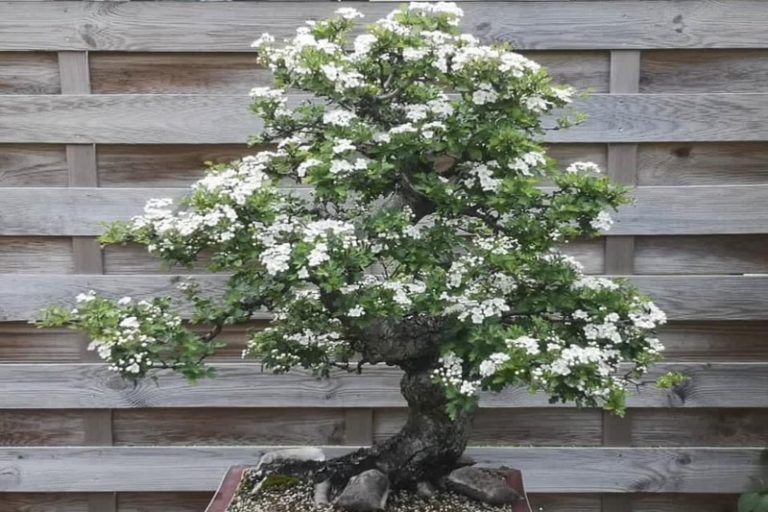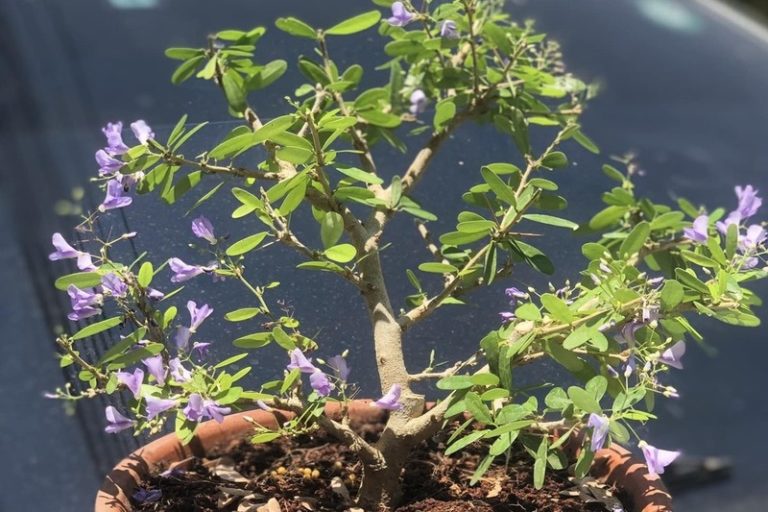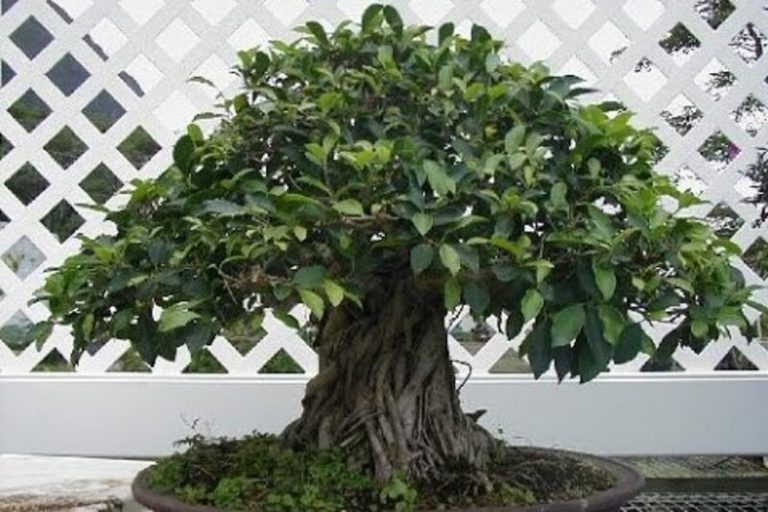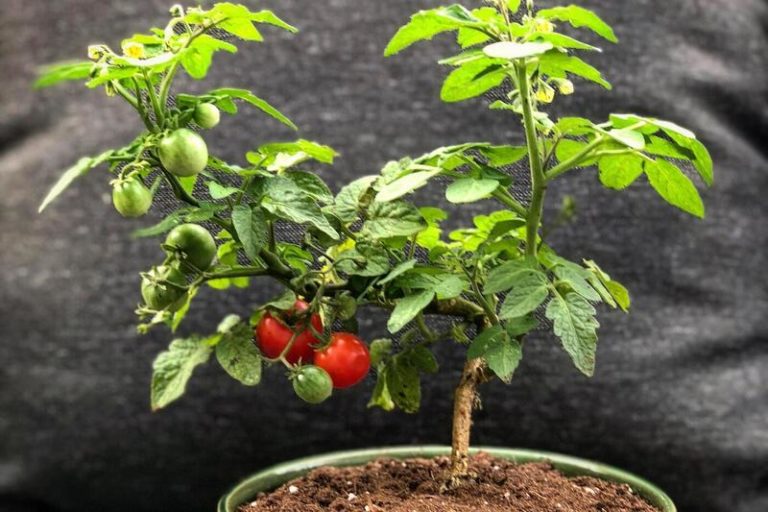Ficus Too Little Bonsai: A Petite Marvel for Your Indoor Space
Bonsai trees are enchanting miniature versions of their full-sized counterparts, and one such delightful variety is the Ficus Too Little bonsai. In this article, we’ll explore the unique features of the Ficus Too Little bonsai and provide simple tips to care for it. So, let’s dive in and discover the joys of cultivating this tiny marvel!
What is a Ficus Too Little Bonsai?
The Ficus Too Little bonsai is a small bonsai tree known for its miniature stature and delicate appearance. It is a variety of Ficus bonsai that is well-suited for indoor spaces. This bonsai has tiny leaves and intricately formed branches, which add to its charm. It can thrive in bright, indirect light and is adaptable to various temperature conditions. Proper watering, well-draining soil, and regular pruning are essential for its care. The Ficus Too Little bonsai is a great choice for those who want to bring the beauty of nature into their homes, even with limited space.
History and Origins of Ficus Too Little Bonsai
Ficus Too Little bonsai is a relatively young cultivar that has recently garnered favor among bonsai enthusiasts. While knowledge on its exact origins is scarce, it is a member of the Ficus genus, which includes a wide range of plants such as trees, shrubs, and vines.
The Ficus genus is native to tropical and subtropical Asia, Africa, and Australia. These plants have been bonsai since ancient China and Japan developed the art.
The cultivation of Ficus bonsai, including the Ficus Too Little variety, is a result of selective breeding and careful cultivation techniques. Bonsai artists and horticulturists have been working to create miniature versions of larger Ficus species, with the aim of capturing their beauty and elegance in a compact form.
The specific origins and development of the Ficus Too Little bonsai variety may vary depending on the nursery or breeder. The cultivation process involves selecting and propagating plants with desirable traits, such as small leaf size and compact growth habits. Through years of patient cultivation and refinement, the Ficus Too Little bonsai has emerged as a unique and sought-after variety within the bonsai community.
Today, bonsai aficionados all around the globe admire the Ficus Too Little bonsai. Its small stature, delicate characteristics, and adaptation to indoor surroundings make it a popular choice for people looking to produce bonsai in small places or bring nature’s beauty within.
While the exact history and origins of the Ficus Too Little bonsai may not be extensively documented, its presence in the bonsai world reflects the ongoing efforts to create captivating miniature versions of larger plant species, allowing us to appreciate the artistry and natural beauty of bonsai in a small, captivating form.
Ficus Too Little Bonsai and Their Symbolism
The Ficus Too Little bonsai, like other bonsai trees, carries symbolism and meaning that can vary across different cultures and contexts. While the specific symbolism may differ depending on individual beliefs and interpretations, here are some common associations and meanings often associated with bonsai trees in general, which can be extended to the Ficus Too Little bonsai:
1. Harmony and Balance: Bonsai trees are often seen as representations of harmony and balance between nature and humans. The meticulous pruning and shaping of a bonsai symbolize the desire for harmony and the pursuit of balance in life.
2. Patience and Perseverance: Growing and Maintaining a Bonsai, Including Ficus Too little bonsai necessitates patience, since the tree takes time to develop and mature. Bonsai represents the value of patience, effort, and the pleasures that come from maintaining something over time.
3. Connection with Nature: Bonsai trees, including the Ficus Too Little bonsai, serve as reminders of our connection with nature. They bring a slice of the natural world into our indoor spaces, fostering a sense of tranquility, grounding, and appreciation for the beauty of the natural world.
4. Reflection and Contemplation: Bonsai trees are often associated with introspection, reflection, and contemplation. Their serene and timeless beauty encourages quiet moments of contemplation, inviting individuals to reflect on the deeper aspects of life and find inner peace.
5. Symbol of Miniaturization: The small size of bonsai, including the Ficus Too Little bonsai, represents the beauty and intricacy of nature distilled into a miniature form. It symbolizes the appreciation of life’s details and the ability to find beauty in the smallest of things.
6. Symbol of Longevity: Bonsai trees have a reputation for longevity, with some specimens living for hundreds of years. They represent endurance, resilience, and the passage of time, reminding us of the importance of nurturing and preserving what is valuable and meaningful.
It’s important to note that symbolism can be deeply personal and subjective. The meanings and associations one attaches to a bonsai tree, such as the Ficus Too Little bonsai, may vary based on cultural background, personal beliefs, and individual experiences. Ultimately, the symbolism of a bonsai tree is what resonates with the individual caretaker or observer, making it a truly personal and meaningful expression of nature’s beauty.
Characteristics of the Ficus Too Little Bonsai
The Ficus Too Little bonsai possesses several distinct characteristics that contribute to its unique appeal. Here are some key traits of the Ficus Too Little bonsai:
Small Size: As the name suggests, the Ficus Too Little bonsai is known for its petite stature. It is deliberately cultivated to remain small, making it an excellent choice for indoor spaces or those with limited gardening areas. Its compact size allows it to fit comfortably on tabletops, shelves, or small gardens.
Delicate Leaves: The leaves of the Ficus Too Little bonsai are tiny and delicately formed. They are typically dark green and have an attractive, glossy texture. The small size of the leaves adds to the overall charm and aesthetic appeal of this bonsai variety.
Intricate Branching: The Ficus Too Little bonsai exhibits intricate branching patterns. The branches often twist and turn, creating an appealing visual display. The interplay of the branches contributes to the bonsai’s overall grace and elegance.
Indoor Adaptability: The Ficus Too Little bonsai is well-suited for indoor environments. It can thrive in the relatively stable conditions found indoors, making it an ideal choice for bonsai enthusiasts who want to bring the beauty of nature into their homes or offices. Its adaptability to indoor lighting and temperature conditions adds to its appeal as an indoor bonsai.
Tolerance to Pruning: Ficus Too Little bonsai, like other Ficus bonsai cultivars, responds well to trimming and shaping. Regular trimming helps it to keep its tiny size and fosters the development of a beautiful bonsai shape. This feature makes it a great choice for bonsai aficionados who like the creative elements of bonsai growth.
Decorative Container: The Ficus Too Little bonsai is often displayed in a decorative container or bonsai pot. The choice of a suitable container enhances the overall aesthetics of the bonsai and complements its delicate features. The container can be selected to match the personal style and preferences of the caretaker, adding to the visual appeal of the bonsai composition.
These characteristics collectively make the Ficus Too Little bonsai a captivating and popular choice among bonsai enthusiasts. Its small size, delicate leaves, intricate branching, indoor adaptability, and pruning tolerance contribute to its overall beauty and make it an excellent addition to any bonsai collection or indoor space.
Types of Ficus Too Little bonsai
There are several common Ficus bonsai varieties that are popular among bonsai enthusiasts. These varieties can be cultivated in small sizes and share similar characteristics to the Ficus Too Little bonsai. Some of the well-known Ficus bonsai varieties that are commonly available include:
- Ficus microcarpa: Also known as Chinese Banyan or Ginseng Ficus, it is a popular choice for bonsai cultivation due to its small leaves, aerial roots, and twisting trunk.
- Ficus retusa: Known as the Cuban Laurel or Indian Laurel, this variety has glossy, dark green leaves and can be styled into different bonsai forms, such as formal upright or informal upright.
- Ficus benjamina: Commonly referred to as the Weeping Fig, it has slender, drooping branches and small, waxy leaves. It can be trained into various bonsai styles, including cascade or semi-cascade.
- Ficus nerifolia: Also known as the Willow Leaf Ficus, it features narrow, elongated leaves and a compact growth habit. This variety is favored for its ability to develop a dense canopy and is suitable for different bonsai styles.
It is crucial to remember that the availability of various Ficus bonsai types varies based on where you live and the offers of local nurseries or bonsai specialized stores. If you are especially looking for a Ficus Too Little bonsai, I recommend contacting bonsai nurseries or breeders that are knowledgeable with the precise varieties or hybrids classified as such.
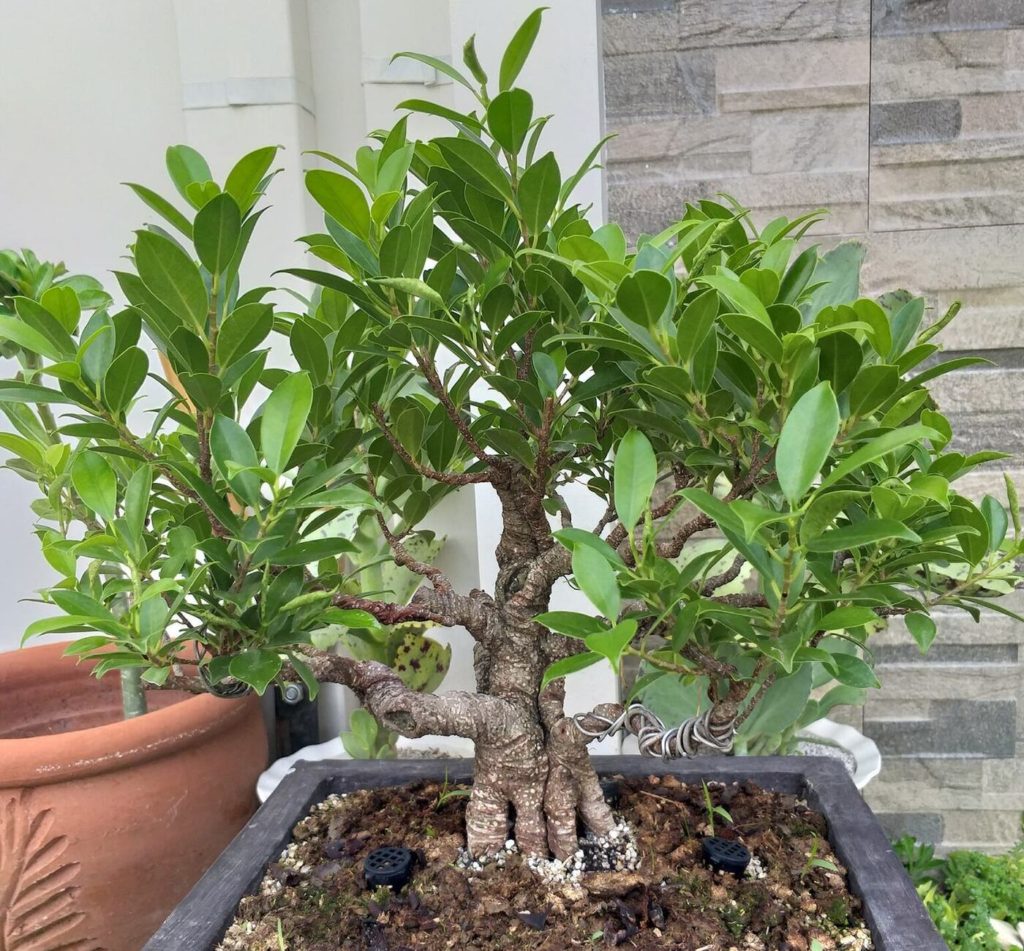
How to Grow a Ficus Too Little Bonsai
Growing a Ficus Too Little Bonsai requires careful attention and proper care. Here is a step-by-step guide to help you successfully cultivate and grow your Ficus Too Little Bonsai:
- Choose the Right Location: Select a suitable location for your Ficus Too Little Bonsai. It thrives in bright, indirect light, so place it near a window where it can receive ample filtered sunlight. If natural light is limited, consider using a grow light specifically designed for indoor plants.
- Select the Right Bonsai Pot and Soil: To guarantee good drainage, use a shallow bonsai container with appropriate drainage holes. Use a well-draining bonsai soil mix that lets water to flow freely while still providing the nutrients required for the plant’s development. Regular garden soil should be avoided since it might hold too much moisture and harm root health.
- Watering: Proper watering is crucial for the health of your Ficus Too Little bonsai Check the moisture level of the soil regularly by inserting your finger about an inch deep. Water the bonsai when the top inch of soil feels slightly dry. Ensure thorough watering, allowing water to flow out of the drainage holes. Avoid overwatering, as excessive moisture can lead to root rot. Adjust the watering frequency based on environmental conditions and the bonsai’s needs.
- Temperature and Humidity: Maintain a consistent temperature range between 60-75°F (15-24°C) for your Ficus Too Little Bonsai. Protect it from extreme temperature fluctuations and drafts. Moderate humidity is ideal for its growth, so mist the leaves occasionally or use a humidity tray filled with water and pebbles to increase moisture in the air surrounding the bonsai.
- Pruning and Shaping: Regular pruning and shaping are essential for maintaining the small size and desired form of your Ficus. Too Little Bonsai Prune back new growth using sharp pruning shears or bonsai scissors to maintain its shape and encourage branching. Be mindful of the bonsai’s natural growth pattern and aesthetic goals when pruning.
- Fertilization: Provide balanced bonsai fertilizer during the growing season to ensure your Ficus Too Little Bonsai receives adequate nutrients. Follow the instructions on the fertilizer package and apply it sparingly to avoid overfertilization, which can harm the bonsai. Adjust the frequency and strength of fertilization based on the specific fertilizer and the needs of your bonsai.
- Pests and Diseases: Monitor Your Ficus Too Little Bonsai for common pests such as aphids, spider mites, or scale insects. Treat any infestations promptly using organic pest control methods or insecticidal soaps. Keep an eye out for signs of leaf discoloration, wilting, or unusual growth, which could indicate diseases or other issues. If you notice any problems, consult with a local bonsai expert or horticulturist for appropriate remedies.
- Rotation and Care: Rotate your Ficus Too Little Bonsai regularly to ensure even growth and exposure to light. Periodically inspect the roots and repot the bonsai when necessary, typically every 2–3 years, to maintain healthy root development.
Remember that growing a bonsai, including the Ficus Too Little variety, requires patience, observation, and ongoing care. By providing the right conditions, regular maintenance, and attention to its specific needs, you can enjoy the beauty and rewards of growing a thriving Ficus Too Little bonsai.
Benefits of Ficus Too Little Bonsai
The Ficus Too Little bonsai offers several Benefits, making it a popular choice among bonsai enthusiasts. Here are some of the key benefits of growing a Ficus Too Little bonsai:
1. Compact Size: The small and compact size of the Ficus Too Little Bonsai makes it well-suited for indoor spaces or those with limited gardening areas. It can be placed on tabletops, shelves, or small gardens, allowing you to enjoy the beauty of bonsai even in constrained spaces.
2. Indoor Adaptability: The Ficus Too Little Bonsai flourishes in domestic settings. It can tolerate the comparatively stable indoor conditions, including moderate temperatures and reduced light levels. This adaptability makes it an excellent option for bringing the natural splendor of the outdoors into the home or office.
3. Aesthetically Pleasing: The Ficus Too Little Bonsai possesses delicate leaves, intricate branching patterns, and an overall graceful appearance. Its miniature size adds to its aesthetic appeal, creating a captivating and eye-catching display. It can serve as a decorative focal point, enhancing the visual appeal of any space.
4. Relaxation and Stress Relief: Ficus maintenance The experience of viewing Too Little Bonsai can be therapeutic and relaxing. Spending time to water, prune, and shape the bonsai provides an opportunity for relaxation, mindfulness, and tension relief. Additionally, the presence of a bonsai tree can promote tranquility and well-being by creating a calming atmosphere.
5. Connection with Nature: Even in an indoor location, the Ficus Too Little Bonsai functions as a connection to the natural world. Its presence adds a touch of nature to your living space, nurturing an appreciation for the tranquility and majesty of nature. This connection with nature can have a positive effect on mental health and quality of life as a whole.
6. Artistic Expression: How to Cultivate and Maintain a Ficus Too Little Bonsai provides an outlet for artistic expression. The pruning, shaping, and decorating of bonsai allow for the creation of distinct and individualized forms. It is an opportunity to hone your bonsai artistry by investigating the artistry and originality involved in cultivating miniature trees.
7. Educational and Learning Experience: Growing a Ficus Too Little Bonsai provides an educational opportunity to learn about the principles of horticulture, plant care, and bonsai techniques. It offers hands-on experience in understanding plant growth, cultivation practices, and the intricate balance required to maintain a healthy and thriving bonsai tree.
While the benefits of growing a Ficus Too Little bonsai can vary from person to person, these advantages collectively make it an attractive choice for those seeking a visually appealing, low-maintenance, and fulfilling plant experience.
Styling and Design of a Ficus Too Little Bonsai
When it comes to styling and designing a Ficus Too Little bonsai, there are various approaches and techniques you can employ to create a visually pleasing composition. Here are some considerations and ideas for styling and designing your Ficus Too Little bonsai:
Bonsai Styles: Familiarize yourself with different bonsai styles to determine the overall design you want to achieve. Common styles include formal upright (Chokkan), informal upright (Moyogi), slanting (Shakan), cascade (Kengai), semi-cascade (Han-Kengai), and windswept (Fukinagashi), among others. Choose a style that suits the overall aesthetics you desire for your Ficus Too Little bonsai.
Trunk and Branches: Assess the trunk and branches of your bonsai and consider their natural growth patterns. Select the primary trunk and any major branches that will form the backbone of your design. Aim for a visually pleasing structure with an appropriate balance of thickness and taper. Use bonsai wire to gently shape and guide the growth of branches, giving them artistic curves and bends.
Branch Placement and Layering: Create visual depth and appeal by arranging the branches in distinct strata. Arrange the branches so that they radiate outward from the trunk, with shorter branches closer to the trunk than longer ones. This technique of layering adds depth and realism to the design.
Pruning and Leaf Reduction: Regular pruning is essential to maintain the small size and refine the shape of your Ficus Too Little bonsai. Trim back long branches to encourage denser growth, and prune excess foliage to maintain balance and proportion. Leaf reduction techniques, such as defoliation or selective leaf pruning, can be employed to further refine the size and aesthetics of the leaves.
Pot Selection: Choose a suitable bonsai pot that complements the style and size of your Ficus Too Little bonsai. Consider the color, shape, and material of the pot to enhance the overall composition. The pot should provide adequate space for root growth while harmonizing with the bonsai’s design.
Accent Elements: Enhance the visual appeal of your Ficus Too Little bonsai by incorporating accent elements such as rocks, moss, or small figurines. These elements can add a sense of scale, natural scenery, or storytelling to your bonsai composition.
Continual Observation and Adjustments: Bonsai styling is an ongoing process that requires constant observation and adjustments. Regularly evaluate the growth and development of your Ficus Too Little bonsai, making necessary tweaks to maintain its desired form and aesthetics. Monitor the balance of branches, branch density, and overall health of the tree.
Remember that styling and developing a bonsai is a creative process that takes time, experimentation, and knowledge of bonsai aesthetics. It allows for personal expression and creative interpretation. You may create an engaging and harmonious bonsai design that expresses your vision and respect for this living art form by carefully evaluating the natural characteristics of your Ficus Too Little bonsai and employing bonsai methods.
How to Care for and Maintain Ficus Too Little Bonsai
Caring for and maintaining a Ficus Too Little bonsai involves providing the right conditions and regular attention to ensure its health and vitality. Here are some essential care guidelines for your Ficus Too Little bonsai:
- Watering: Proper watering is crucial for the health of your Ficus Too Little bonsai. Water the bonsai when the top inch of soil feels slightly dry. Ensure thorough watering, allowing water to flow out of the drainage holes. Avoid overwatering, as excessive moisture can lead to root rot. Adjust the watering frequency based on environmental conditions and the bonsai’s needs.
- Lighting: Place your Ficus Too Little bonsai in a location that receives bright, indirect light. While it can tolerate lower light conditions, it thrives in well-lit areas. If natural light is limited, consider using a grow light specifically designed for indoor plants to supplement the lighting needs.
- Temperature and Humidity: Ficus Too Little bonsai prefers moderate temperatures ranging between 60 and 75°F (15 and 24°C). Protect it from extreme temperature fluctuations and drafts. Maintain moderate humidity levels by misting the leaves occasionally or using a humidity tray filled with water and pebbles to increase moisture in the air surrounding the bonsai.
- Pruning and Shaping: Regular pruning is necessary to maintain the small size and desired form of your Ficus Too Little bonsai. Prune back new growth using sharp pruning shears or bonsai scissors to maintain its shape and encourage branching. Be mindful of the bonsai’s natural growth pattern and aesthetic goals when pruning.
- Fertilization: Provide balanced bonsai fertilizer during the growing season to ensure your Ficus Too Little bonsai receives adequate nutrients. Follow the instructions on the fertilizer package and apply it sparingly to avoid overfertilization, which can harm the bonsai. Adjust the frequency and strength of fertilization based on the specific fertilizer and the needs of your bonsai.
- Repotting: Repot your Ficus Too Little bonsai every 2-3 years, typically during the spring or early summer. Use a well-draining bonsai soil mix and trim back the roots while repotting to promote new growth. Repotting allows for root development and prevents the bonsai from becoming root-bound.
- Pest and Disease Control: Monitor Your Ficus Too Little bonsai for common pests such as aphids, spider mites, or scale insects. Inspect the leaves and branches regularly and treat any infestations promptly using organic pest control methods or insecticidal soaps. Ensure good airflow around the bonsai to prevent the development of fungal diseases.
- Regular Maintenance: Continuously observe your Ficus Too Little bonsai for any signs of stress, disease, or imbalance. Trim and shape the bonsai as necessary to maintain its form and aesthetics. Remove any yellowing or dead leaves to maintain a tidy appearance.
- Education and Learning: Continue to expand your knowledge about bonsai care and techniques. Join bonsai clubs, attend workshops, or consult with experienced bonsai enthusiasts to enhance your understanding and refine your skills in caring for your Ficus Too Little Bonsai.
Remember that each bonsai is unique, and care requirements can vary. It is important to closely observe and understand the specific needs of your Ficus Too Little bonsai to provide optimal care and ensure its long-term health and beauty.
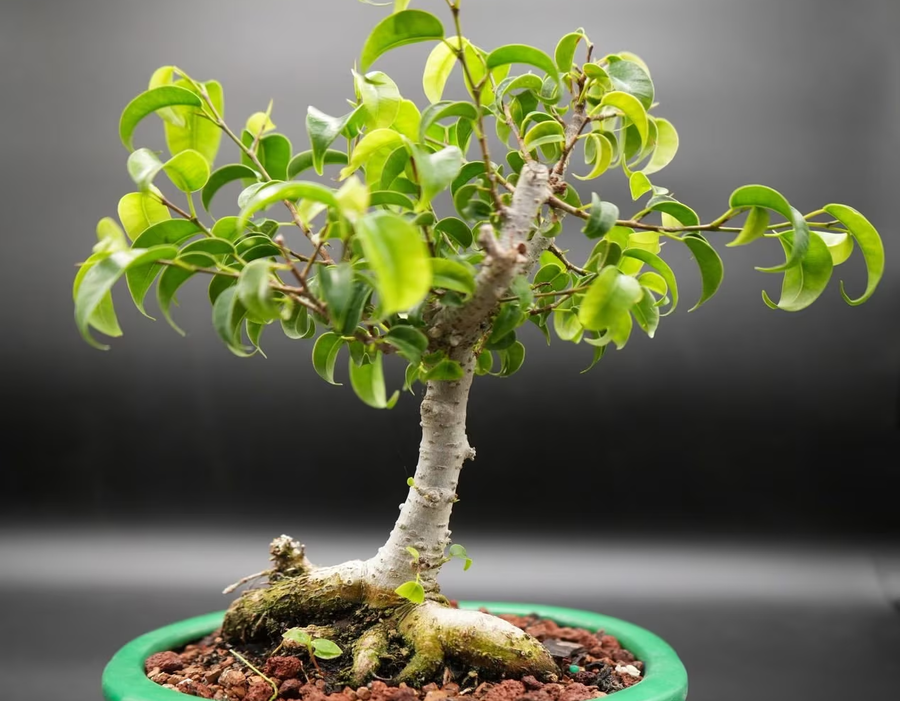
Ficus Too Little Bonsai Care Sheet
| Aspect | Care Tips |
| Watering | Water when the top inch of soil feels slightly dry. Ensure thorough watering, allowing water to flow out of the drainage holes. Avoid overwatering. |
| Sunlight | Place in a location with bright, indirect light. Can tolerate lower light conditions, but thrives in well-lit areas. Supplement with a grow light if necessary. |
| Temperature | Maintain moderate temperatures between 60-75°F (15-24°C). Protect from extreme temperature fluctuations and drafts. |
| Humidity | Moderate humidity is ideal. Mist the leaves occasionally or use a humidity tray filled with water and pebbles to increase moisture in the air. |
| Fertilization | Provide balanced bonsai fertilizer during the growing season. Follow instructions on the package and avoid overfertilization. |
| Pruning and Trimming | Regular pruning maintains size and shape. Prune back new growth using sharp shears or bonsai scissors. |
| Wiring and Styling | Wiring can be used to shape branches. Be cautious and avoid damaging the bark. Remove wires before they cut into the branches. |
| Repotting | Repot every 2-3 years in a well-draining bonsai soil mix. Trim back roots during repotting. |
| Pest and Disease Control | Monitor for pests and treat promptly using organic pest control methods or insecticidal soaps. Ensure good airflow to prevent fungal diseases. |
| Winter Care | Protect from cold drafts and temperature extremes. Consider placing near a window or providing supplemental lighting during the winter months. |
| Regular Maintenance | Continuously observe for signs of stress or imbalance. Trim, shape, and remove yellowing or dead leaves as necessary. |
Remember to tailor the care to the specific needs of your Ficus Too Little Bonsai and adjust as necessary based on your climate and environment. Regularly observe and interact with your bonsai to ensure its health and maintain its desired form.
Conclusion:
Cultivating the Ficus Too Little bonsai is a rewarding and enjoyable experience. With proper care and attention, this petite marvel will bring a touch of nature’s elegance into your indoor space. Remember to water it appropriately, provide suitable lighting, and maintain the right temperature and humidity levels. By following these simple guidelines, you can create a thriving bonsai that will captivate and delight for years to come. Happy bonsai gardening!
FAQ:
Q: What is a Ficus Too Little Bonsai?
A: The Ficus Too Little Bonsai is a small version of the Ficus benjamina tree, which is more widely known as the weeping fig. It is a small, compact bonsai tree that can be grown well indoors.
Q: How tall does a Ficus Too Little Bonsai grow?
A: Ficus Too Little Bonsai typically grows to a height of around 6–10 inches (15–25 cm), making it a perfect choice for small spaces and tabletop displays.
Q: Can Ficus Too Little Bonsai be kept indoors?
A: Yes, Ficus Too Little Bonsai is well-adapted to indoor environments. It thrives in moderate light conditions and can tolerate the relatively stable temperatures found indoors.
Q: How often should I water my Ficus Too Little Bonsai?
A: How often you water your bonsai relies on things like the size of the pot, the weather, and what the plant needs. As a general rule, the bonsai needs water when the top inch of dirt feels dry. Make sure to water it well and let the water run out of the drainage holes.
Q: Does Ficus Too Little Bonsai require direct sunlight?
A: Ficus Too Little Bonsai prefers bright, indirect light. While it can tolerate lower light conditions, it thrives in well-lit areas. Place it near a window or provide supplemental grow lights if natural light is limited.
Q: How do I fertilize my Ficus Too Little Bonsai?
A: During the growth season, use a balanced bonsai fertilizer and do what it says on the box. Don’t put too much fertilizer on the shrub, because too much can hurt it. Change how often and how much you feed based on the type of fertilizer and what your bonsai needs.
Q: When should I prune my Ficus Too Little Bonsai?
A: Pruning can be done throughout the year to maintain the desired shape and size of your bonsai. Trim back new growth using sharp pruning shears or bonsai scissors. Remove any dead or yellowing leaves to maintain a tidy appearance.
Q: How often should I repot my Ficus Too Little Bonsai?
A: Repotting is typically done every 2-3 years during spring or early summer. Use a well-draining bonsai soil mix and trim back the roots during repotting to promote new growth. Repotting allows for root development and prevents the bonsai from becoming root-bound.
Q: What pests or diseases should I watch out for with Ficus Too Little Bonsai?
A: Common pests that can affect Ficus Too Little Bonsai include aphids, spider mites, and scale insects. Regularly inspect the leaves and branches for any signs of infestation and treat them promptly using organic pest control methods or insecticidal soaps. Ensure good airflow to prevent fungal diseases.
Q: How do I care for my Ficus Too Little Bonsai during winter?
A: Protect your Ficus Too Little Bonsai from cold drafts and temperature extremes during winter. Consider placing it near a window or providing supplemental lighting to ensure it receives adequate light. Adjust watering frequency to accommodate the reduced growth rate during the winter months.
Also Read:



